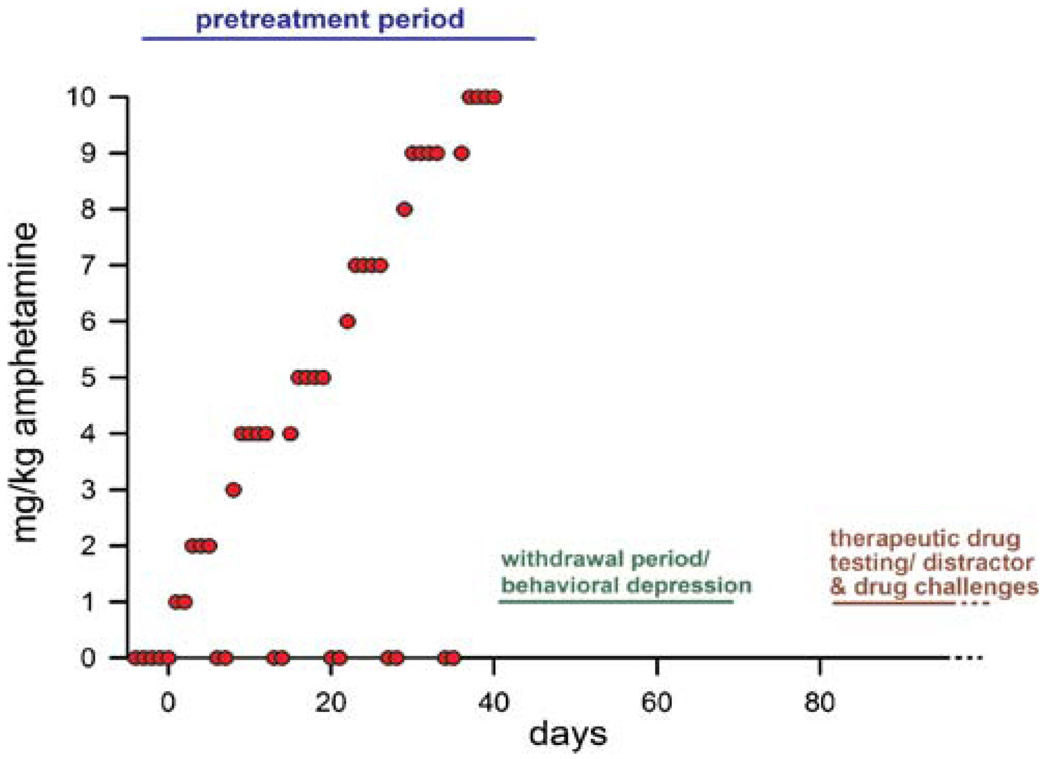Fig. 2.
Illustration of the AMPH-pretreatment regimen developed by Robinson et al. (Robinson and Camp 1987; Robinson et al. 1988; Paulson et al. 1991; Paulson and Robinson 1995) and employed in our experiments on the cognitive and neuronal consequences of AMPH pretreatment and on the attenuation of these effects by low-dose treatment with antipsychotic drugs (Martinez et al. 2005; Kozak et al. 2007; Martinez and Sarter 2008). The pretreatment regimen consists of twice daily administration of AMPH in accordance with an escalating-dosing regimen over 40 days. While not producing neurotoxic effects, this AMPH-pretreatment regimen results in long-term sensitization of the mesolimbic dopamine system, impairments in behavioral and cognitive functions (see text), and in a hypersensitivity of these functions to AMPH challenges. Animals are on-task during the pretreatment regimen, although they cease to perform after doses >2 mg/kg. During weekends, vehicle is administered to model the crashes that are typically observed in AMPH abusers and are known to foster AMPH-induced psychosis (see text). Additionally, attentional performance recovers partially during the drug-off days. Our evidence indicates that the long-term consequences of repeated, escalating AMPH treatment on cortical cholinergic neurotransmission cannot be reproduced in animals that underwent such pretreatment but did not perform the task. Attentional performance recovers during a 10–15-day post-pretreatment period, after which the effects of distractors, AMPH challenges, and putative therapeutic treatments are assessed

